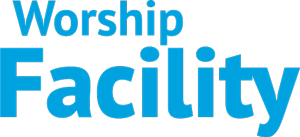Ministry Brands’ 2025 State of Church Giving Report has been released. Key findings of the report show:
- Recurring giving accounts for 42% of digital donations and 57% of digital transactions, even though nearly half of churches don’t currently offer the option.
- Giving through digital wallets (Apple Pay, Venmo, etc.) more than doubled in 2024, but only 20-33% of churches have adopted digital wallets.
- While 61% of churches saw digital giving grow, there was no reported decline in traditional cash and check giving – overcoming the assumption that digital opportunities would disrupt existing giving habits.
The report’s findings were gathered from Church Management Systems (ChMS), as well as reports on digital donations, and a survey sent to more than 1,000 pastors and church leaders across the United States. Churches were categorized by average weekly attendance: Small (1-249), Medium (250-999), and Large (1000+).
All Christian Denominations See an Increase
51% of responding churches reported an increase in giving in 2024, a factor holding steady with both Catholic and Protestant churches. For most churches, the rate of increase was 4-7%. In contrast, 24% saw a drop in giving, and a combined 2% percent either saw no change or were unsure.
Digital Giving on the Rise
In a previous article “Aligning Your House of Worship With Gen Z“, Worship Facility discussed that Gen Z is already having a significant impact on the modern world, specifically in how business is handled and how transactions are done. Members of Gen Z are more likely than the previous generation, Millennials, to go to church, and they’re likely to be engaged and to support the church financially, however they rarely if ever use cash and may have never written a check. Younger Millennials also tend to be averse to cash, given the proliferation of digital options made available during the pandemic.
These numbers are reflected in the increase in giving by generation. Only 16% of churches reported an increase in donations coming from Gen Z, while 34% reported an increase in giving from Millennials and Gen X. A further 34% of churches saw an increase in giving from Baby Boomers, who overall account for 47% of church donations.
Only 12% of churches reporting having no digital donation options at all. Of the majority offering digital options, 62% allow donations directly through the church website, while 54% allow recurring automatic payments, and 50% allow bank transfers. Less popular options include apps at 36% and text-to-give at 29%.
When looking at church size, there was some difference in giving. While 63% of large churches reported an increase in giving, and a healthy 57% of medium-sized churches reported an increase, only 46% of small churches saw an increase.
Little regional difference
Comparing responses by region, church giving varied little by region. Church donations increased by almost the same rate in the Midwest (52%) and the South (51%), but a bit more in the Western part of the country (54%). The Northeast lagged significantly, where only 46% of churches saw an increase in giving.
The West also saw the lowest drop in attendance with 17% of churches there reporting lower attendance, compared to 20% in the Midwest, 24% in the South, and 26% in the Northeast
For more information, click here to download the entire Ministry Brands report.

